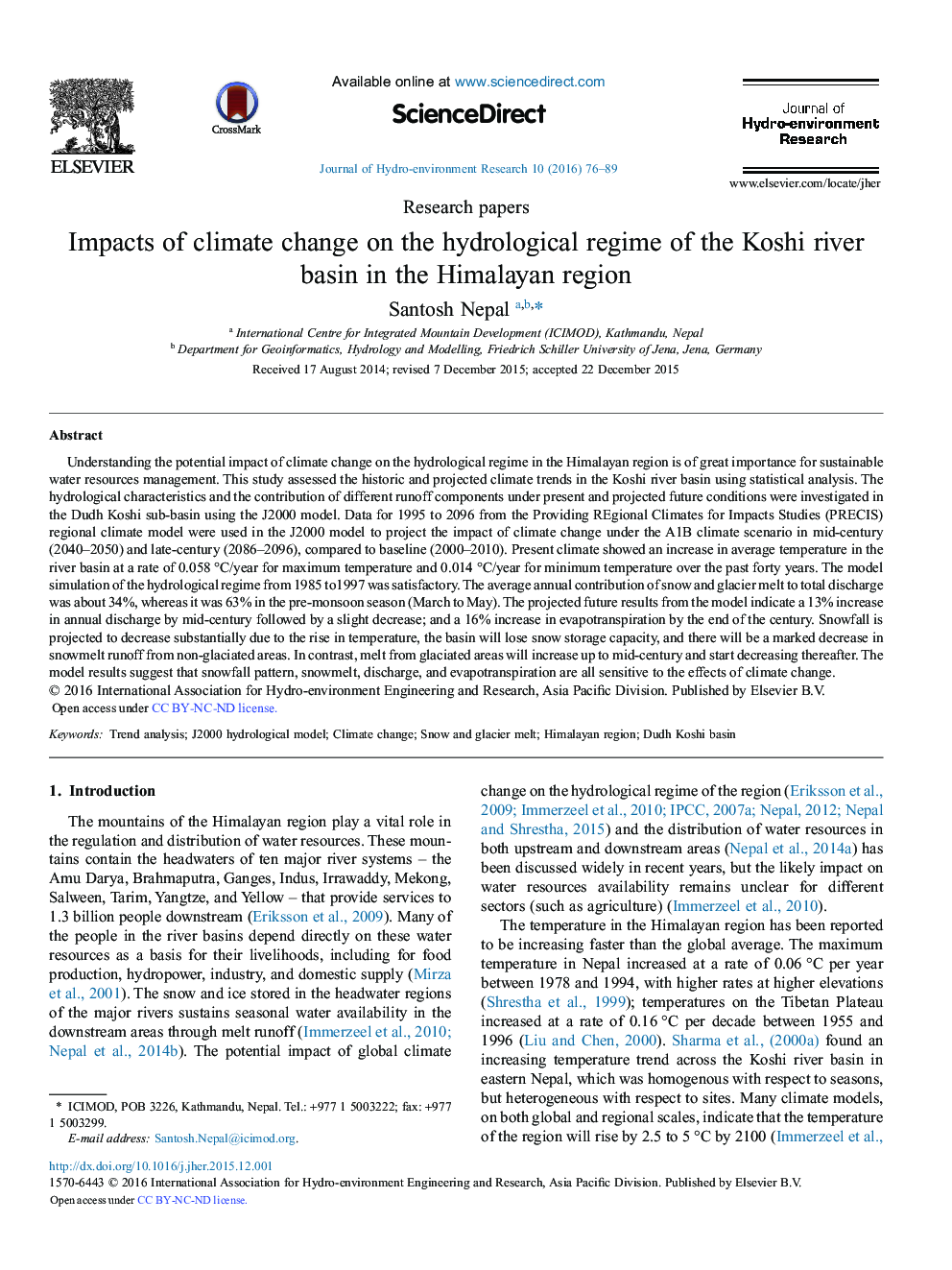| کد مقاله | کد نشریه | سال انتشار | مقاله انگلیسی | نسخه تمام متن |
|---|---|---|---|---|
| 6368744 | 1623691 | 2016 | 14 صفحه PDF | دانلود رایگان |

- A distributed J2000 hydrological model was used to estimate future hydrology in the Himalayan region.
- The maximum temperature in the Koshi river basin is increasing at a rate of 0.058â°C/year.
- The present contribution of melt runoff from the glacier area to total discharge is 17%.
- Snowmelt from the glacier area will increase up to mid century and then decrease.
Understanding the potential impact of climate change on the hydrological regime in the Himalayan region is of great importance for sustainable water resources management. This study assessed the historic and projected climate trends in the Koshi river basin using statistical analysis. The hydrological characteristics and the contribution of different runoff components under present and projected future conditions were investigated in the Dudh Koshi sub-basin using the J2000 model. Data for 1995 to 2096 from the Providing REgional Climates for Impacts Studies (PRECIS) regional climate model were used in the J2000 model to project the impact of climate change under the A1B climate scenario in mid-century (2040-2050) and late-century (2086-2096), compared to baseline (2000-2010). Present climate showed an increase in average temperature in the river basin at a rate of 0.058â°C/year for maximum temperature and 0.014â°C/year for minimum temperature over the past forty years. The model simulation of the hydrological regime from 1985 to1997 was satisfactory. The average annual contribution of snow and glacier melt to total discharge was about 34%, whereas it was 63% in the pre-monsoon season (March to May). The projected future results from the model indicate a 13% increase in annual discharge by mid-century followed by a slight decrease; and a 16% increase in evapotranspiration by the end of the century. Snowfall is projected to decrease substantially due to the rise in temperature, the basin will lose snow storage capacity, and there will be a marked decrease in snowmelt runoff from non-glaciated areas. In contrast, melt from glaciated areas will increase up to mid-century and start decreasing thereafter. The model results suggest that snowfall pattern, snowmelt, discharge, and evapotranspiration are all sensitive to the effects of climate change.
Journal: Journal of Hydro-environment Research - Volume 10, March 2016, Pages 76-89